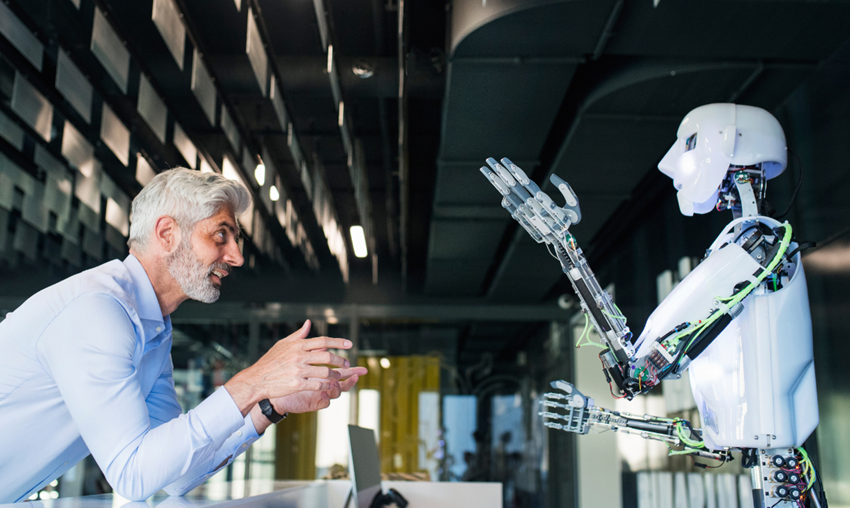Recently published research assessed human trust when collaborating with eyed and non-eyed robots of the same type. The data suggest that humans might not need human-like machines to trust and work with them. Instead, they even seem to collaborate better with machine-like, eyeless machines.
Since human beings are a collaborative species, the eyes are a critical element for human social life, as they communicate intentions, allowing the interaction partner to read and adapt to those intentions. It can then be said that eye gaze predictively guides human actions, but to what extent may the eyes have the same importance when it comes to collaboration between humans and machines?
The so-called cobots are collaborative robots created to help humans in routine or dangerous tasks in industrial or medical sectors, for instance. Some cobots are designed with eyes and a more anthropomorphic appearance to enhance the naturality of their interaction with humans. For example, the company Rethink Robotics included eyes as a feature in its Baxter and Sawyer cobots to increase the users' feeling of comfort.
With the support of the BIAL Foundation, Artur Pilacinski and his team used a sample of 38 participants, between 18 and 42 years old, and analysed subjective and objective measures (heart rate, pupil size and task completion time), to assess the level of human trust when collaborating with eyed and non-eyed robots of the same type.
According to the article "The robot eyes don't have it. The presence of eyes on collaborative robots yields marginally higher user trust but lower performance", published in July in the scientific journal Heliyon, although participants seem to report slightly higher trust in eyed robots, they performed the task faster and showed larger pupil size (a possible indicator of greater interest in the object) when they interacted with non-eyed robots.
The data then seem to suggest that humans might not need human-like machines to trust and work with them. Instead, they seem to collaborate better with machine-like, eyeless machines.
“We concluded that the cobot's gaze may not be that important for manual collaboration”, says Pilacinski, noting that “objective metrics, such as task completion time and pupil responses, suggest more comfortable cooperation with non-eyed robots”.
The findings of the team of researchers from Ruhr University Bochum (Germany), University of Coimbra and University of Trás-os-Montes and Alto Douro (Portugal) are in line with recent suggestions that anthropomorphism may actually be a detrimental feature of collaborative robots.
Learn more about the project “TrustyCobots: Human-like or machine-like? Tracking psychophysiological components of trust in human-robot collaboration” here.






































